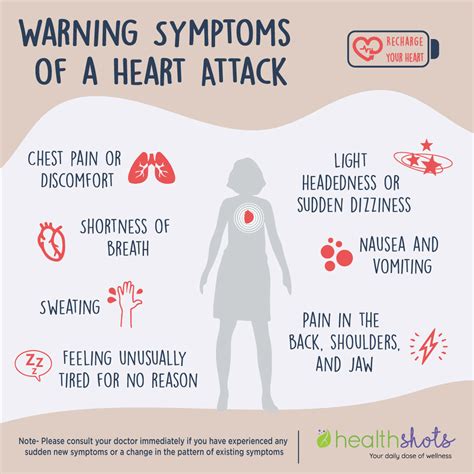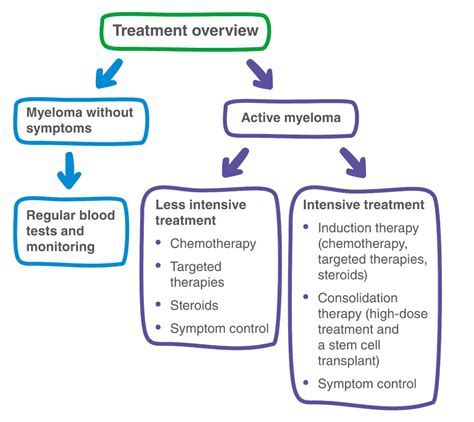Intro
Identify heart attack symptoms, including chest pain, shortness of breath, and nausea, to promptly seek medical help and prevent cardiac damage, learning key warning signs and risk factors.
Recognizing the signs of a heart attack is crucial for prompt medical attention, which can significantly improve outcomes and save lives. A heart attack, also known as myocardial infarction, occurs when the flow of blood to the heart is severely blocked, causing damage to the heart muscle. This condition is a leading cause of death worldwide, affecting millions of people each year. Understanding the symptoms and taking immediate action can make a significant difference in recovery and survival rates. The importance of awareness and education about heart attack symptoms cannot be overstated, as it empowers individuals to take control of their health and seek help when needed.
The prevalence of heart attacks is a significant public health concern, with various factors contributing to the risk, including lifestyle choices, genetics, and pre-existing medical conditions. High blood pressure, high cholesterol, smoking, obesity, and diabetes are among the key risk factors that can increase an individual's likelihood of experiencing a heart attack. Furthermore, the impact of heart attacks extends beyond the individual, affecting families, communities, and the healthcare system as a whole. Therefore, it is essential to approach this topic with a comprehensive understanding, covering not only the symptoms but also prevention strategies, treatment options, and the importance of community support.
Heart attacks can occur suddenly, without warning, or they may be preceded by symptoms that can last for hours, days, or even weeks. The most common symptoms include chest pain or discomfort, which may feel like pressure, tightness, pain, or a squeezing or aching sensation in the chest or arms that may spread to the neck, jaw, or back. Shortness of breath or difficulty breathing, cold sweats, nausea or vomiting, and lightheadedness or fainting are also common symptoms. It is crucial to remember that not all heart attacks present with the classic symptoms; some people may experience mild or no symptoms at all, a condition known as a silent heart attack. Women, in particular, are more likely to experience silent heart attacks or have different symptoms, such as stomach pain or fatigue, which can lead to delays in seeking medical help.
Understanding Heart Attack Symptoms

Common Symptoms in Men and Women
Men and women can experience heart attacks differently, with women often having more subtle or atypical symptoms. While chest pain is the most common symptom in both men and women, women are more likely to experience other symptoms such as shortness of breath, nausea, vomiting, and back or jaw pain. Understanding these gender differences is crucial for healthcare providers and the general public, as it can affect how quickly a heart attack is recognized and treated.Causes and Risk Factors

Risk factors for heart attacks can be divided into modifiable and non-modifiable categories. Modifiable risk factors include high blood pressure, high cholesterol, smoking, obesity, physical inactivity, diabetes, and stress. Non-modifiable risk factors include age, with risk increasing for men over 45 and women over 55, family history of heart disease, and genetics. Managing modifiable risk factors through lifestyle changes and, when necessary, medication, can significantly reduce the risk of having a heart attack.
Lifestyle Modifications
Making healthy lifestyle choices can play a significant role in preventing heart attacks. Eating a heart-healthy diet that is low in saturated fats, trans fats, and sodium, and high in fruits, vegetables, whole grains, and lean protein can help reduce risk factors. Regular physical activity, such as walking, can help lower blood pressure, improve blood lipid profiles, and aid in weight management. Quitting smoking and limiting alcohol intake are also crucial steps in reducing the risk of heart disease.Diagnosis and Treatment

Emergency Response
In the event of a suspected heart attack, calling emergency services immediately is crucial. While waiting for help to arrive, the person should sit or lie down in a comfortable position, loosen tight clothing around the neck, chest, and arms, and chew and swallow an aspirin (if the person is not allergic to aspirin and if the emergency medical personnel or a doctor advises it). Performing CPR if the person is unresponsive and not breathing can also be lifesaving.Recovery and Rehabilitation

Long-term Management
Long-term management of heart disease after a heart attack focuses on preventing another heart attack and managing risk factors. This includes taking medications as prescribed, making lifestyle changes such as eating a healthy diet, getting regular exercise, quitting smoking, and limiting alcohol intake. Regular follow-up appointments with healthcare providers are also essential to monitor the condition of the heart and adjust the treatment plan as needed.Prevention Strategies

Community Support
Community support plays a vital role in both the prevention and management of heart disease. Support groups for individuals who have had heart attacks, as well as their families, can provide emotional support, share experiences, and offer practical advice on recovery and rehabilitation. Furthermore, community-based initiatives that promote heart-healthy lifestyles, such as walking clubs, healthy cooking classes, and stress management workshops, can help create an environment that supports cardiovascular health.Future Directions

Technological Advancements
Technological advancements are also expected to play a significant role in the future management of heart disease. Wearable devices and mobile apps that monitor heart rate, blood pressure, and physical activity can provide individuals with real-time data to manage their risk factors more effectively. Telemedicine is also becoming increasingly important, allowing for remote monitoring and consultation, which can improve access to care, especially for those in rural or underserved areas.As we move forward in the fight against heart disease, it is essential to continue educating the public about the symptoms, causes, and prevention strategies for heart attacks. By working together, we can reduce the incidence of heart attacks and improve outcomes for those who experience them. If you or someone you know is at risk for heart disease or has experienced a heart attack, taking proactive steps towards a heart-healthy lifestyle and seeking professional advice can make all the difference.
We invite you to share your thoughts, experiences, or questions about heart attack symptoms and prevention in the comments below. Your engagement can help raise awareness and support others who may be going through similar challenges. Let's work together towards a future where heart disease is no longer a leading cause of death and disability.
What are the most common symptoms of a heart attack?
+The most common symptoms include chest pain or discomfort, shortness of breath, cold sweats, nausea, vomiting, and lightheadedness or fainting.
How can I reduce my risk of having a heart attack?
+Reducing your risk involves making healthy lifestyle choices such as eating a heart-healthy diet, engaging in regular physical activity, quitting smoking, managing stress, and limiting alcohol intake.
What should I do if I think someone is having a heart attack?
+Call emergency services immediately. If the person is unresponsive and not breathing, begin CPR if you are trained to do so.
Can heart attacks be prevented?
+While not all heart attacks can be prevented, many can be avoided by managing risk factors such as high blood pressure, high cholesterol, smoking, obesity, and diabetes through lifestyle changes and, when necessary, medication.
What is the prognosis after a heart attack?
+The prognosis depends on several factors, including the severity of the heart attack, how quickly treatment was received, and the presence of other health conditions. With prompt and proper treatment, many people can recover and lead active lives.
